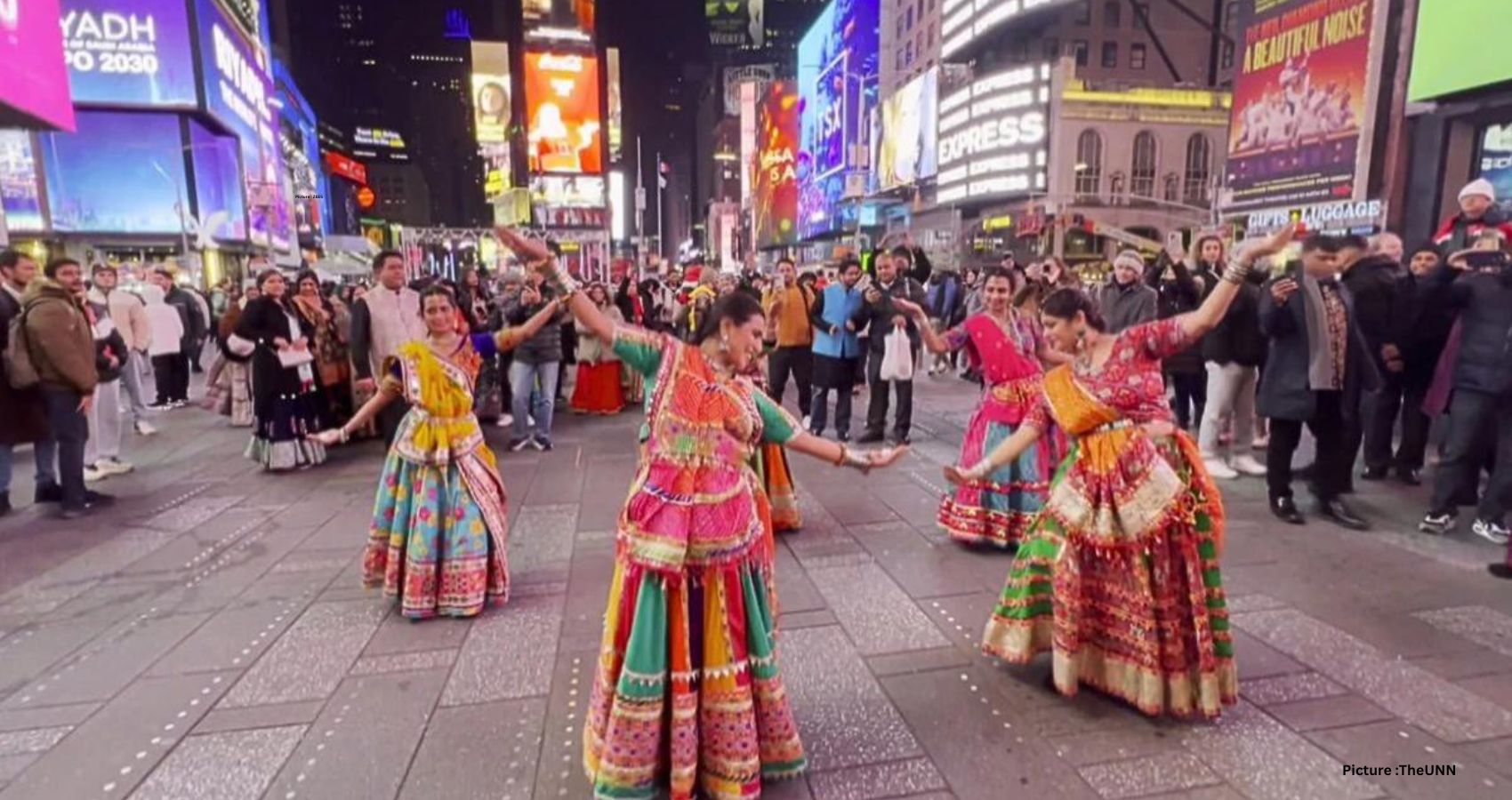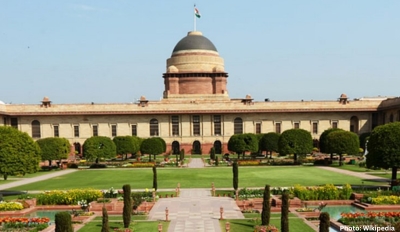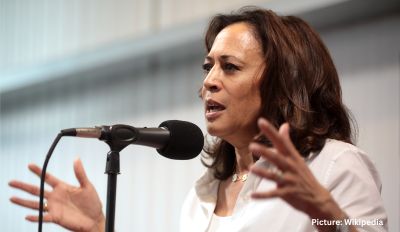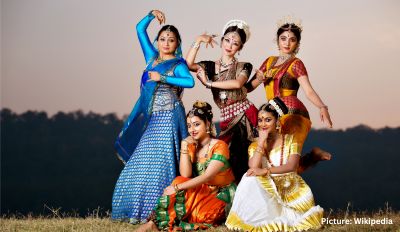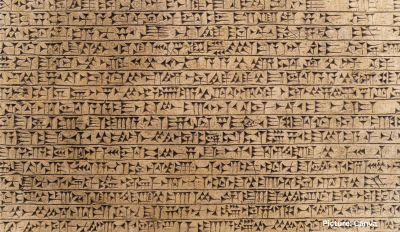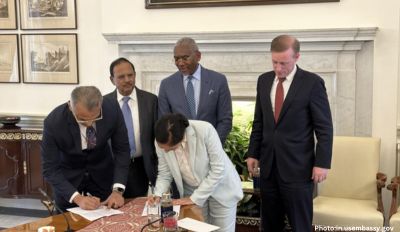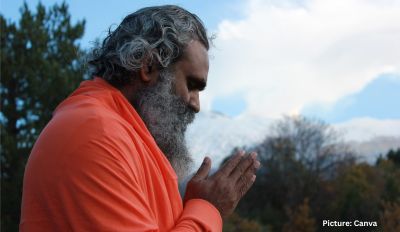The Consulate General of India in association with the Federation of Federation of Indian Associations NY-NJ-CT-NE held a garba celebration at New York’s iconic Times Square to commemorate the dance’s recent inclusion by UNESCO as an Intangible Cultural Heritage. Garba dancers from the Indian American community in colorful attires took to the streets to represent the cultural richness of Gujarat on a global platform. Free transportation, complimentary refreshments and participation certificates were provided for all performing artists. Indian missions across the globe organised Garba programmes to mark the occasion.
“The event was a spectacular showcase of the rich cultural heritage of Gujarat as attendees donned traditional Garba attires,” the organizers said. “The vivid colors and intricate designs of their attire were a sight to behold, and one could feel the energy and pride emanating from them as they represented their culture on a global platform.”
Acting CG of India in NY, Varun Jeph addressing the gathering. / Image – X/@IndiainNewYork
Describing the dance’s inclusion as “momentous and historic occasion”, Acting Consul General of India in New York Dr Varun Jeph hailed the Times Square celebrations as a testament to India’s rich and diverse cultural heritage.
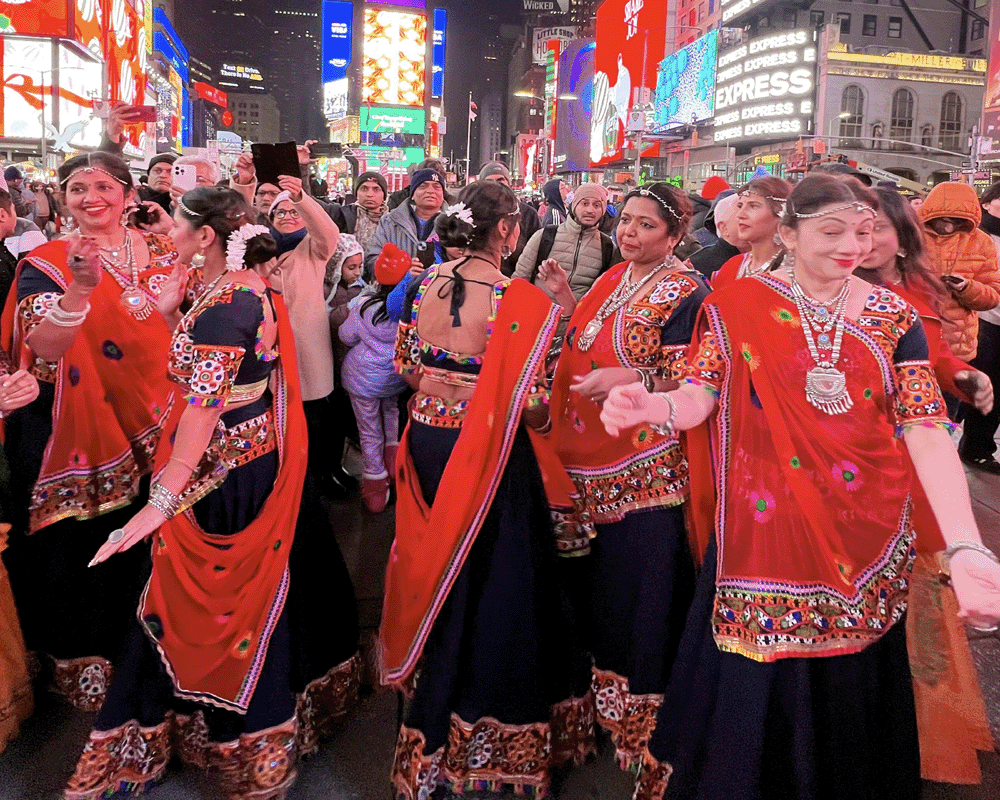 Traditionally performed during Navratri, the nine-day festival that is celebrated to honor the devine feminine energy, Garba is among the oldest folk dances of India. The UNESCO officials appreciated the dance for its “inclusive” nature and hailed it as a symbol of bringing communities together.
Traditionally performed during Navratri, the nine-day festival that is celebrated to honor the devine feminine energy, Garba is among the oldest folk dances of India. The UNESCO officials appreciated the dance for its “inclusive” nature and hailed it as a symbol of bringing communities together.
Today, the Intergovernmental Committee for the Safeguarding of the Intangible Cultural Heritage inscribed ‘Garba of Gujarat’ on the Representative List of the Intangible Cultural Heritage of Humanity during its 18th session, taking place in Kasane, Botswana from 5 to 9 December 2023.
The inclusion of Garba now makes it India’s 15th inscription on the List.
A ritualistic and devotional dance performed throughout the State of Gujarat, and across India, Garba is celebrated for nine days during the festival of Navaratri. The festival is dedicated to the worship of the feminine energy or Shakti. The cultural, performative, and visual expressions of this feminine energy are expressed through the Garba dance. The performative and visual celebration of Garba takes place within homes and temple courtyards, public spaces in villages, urban squares, streets, and large open grounds. Garba thus becomes an all-encompassing participatory community event.
“I offer my sincere congratulations to India, its people and the teams that worked on the nomination dossier. I hope this inscription helps ensure the viability of this tradition and inspires the community, particularly young people, to continue with the knowledge, skills and oral traditions associated with Garba,” said Tim Curtis, Director of UNESCO New Delhi Regional Office for South Asia and UNESCO Representative for Bhutan, India, the Maldives, and Sri Lanka.
Over the decades Garba has been an integral, multivalent component of Gujarati culture in India and among the Indian diaspora across the globe. Garba continues to be a vibrant living tradition. In addition to being a religious ritual, Garba fosters social equality by diluting socio-economic, gender, and rigid sect structures. It continues to be inclusive and participative by diverse and marginalized communities, strengthening community bonds.
The 18th session of the Intergovernmental Committee for the Safeguarding of the Intangible Cultural Heritage, hosted by the Republic of Botswana, was assigned with the job of evaluating nominations submitted by States Parties for inscription on the Lists of the Convention, that include 45 elements for inscription on the Representative List of the Intangible Cultural Heritage of Humanity, 6 elements for inscription on the List of Intangible Cultural Heritage in Need of Urgent Safeguarding, 4 proposals for the Register of Good Safeguarding Practices and 1 International Assistance request.
Apart from ‘Garba of Gujarat,’ some of the new inscriptions include Rickshaws and Rickshaw painting in Dhaka from Bangladesh, Songkran in Thailand, traditional Thai New Year festival from Thailand, Hiragasy, a performing art of the Central Highlands of Madagascar, Junkanoo from the Bahamas, and the Procession and celebrations of Prophet Mohammed’s birthday in Sudan, among others.
The Representative List of the Intangible Cultural Heritage of Humanity of the 2003 UNESCO Convention for the Safeguarding of the Intangible Cultural Heritage currently has some 704 elements corresponding to 5 regions and 143 countries. It includes forms of expression that testify to the diversity of intangible heritage and raises awareness of its importance. By enhancing the viability of communities’ cultural practices and know-how, UNESCO aims to safeguard the intangible cultural heritage of communities globally.
Although labeled ‘a ritualistic and devotional dance performed throughout the State of Gujarat’, Garba is a dance of celebration at any joyous event. It is said that Garba originated among the cowherd friends of Krishna in Vrindavan who got together to take off the weariness of their day’s labor with dancing. Going around in circles while clapping their hands and singing was the basic form of that Garba.
India’s current inventory list of Intangible Cultural Heritage includes Garba of Gujarat, Durga Puja in Kolkata, Kumbh Mela, Nawrouz, Yoga, Traditional brass and copper craft of utensil making among the Thatheras of Jandiala Guru in Punjab, Sankirtana-ritual singing and drumming and dancing of Manipur, Buddhist chanting of Ladakh: recitation of sacred Buddhist texts in the trans-Himalayan Ladakh region in Jammu and Kashmir, Chhau dance, Kalbelia folk songs and dances of Rajasthan, Mudiyettu-ritual theatre and dance drama of Kerala, Kutiyattam-Sanskrit theatre, Tradition of Vedic chanting and Ramlila-the traditional performance of the Ramayana.
The Representative List of the Intangible Cultural Heritage of Humanity of the 2003 UNESCO Convention for the Safeguarding of the Intangible Cultural Heritage currently has some 704 elements corresponding to 5 regions and 143 countries.

